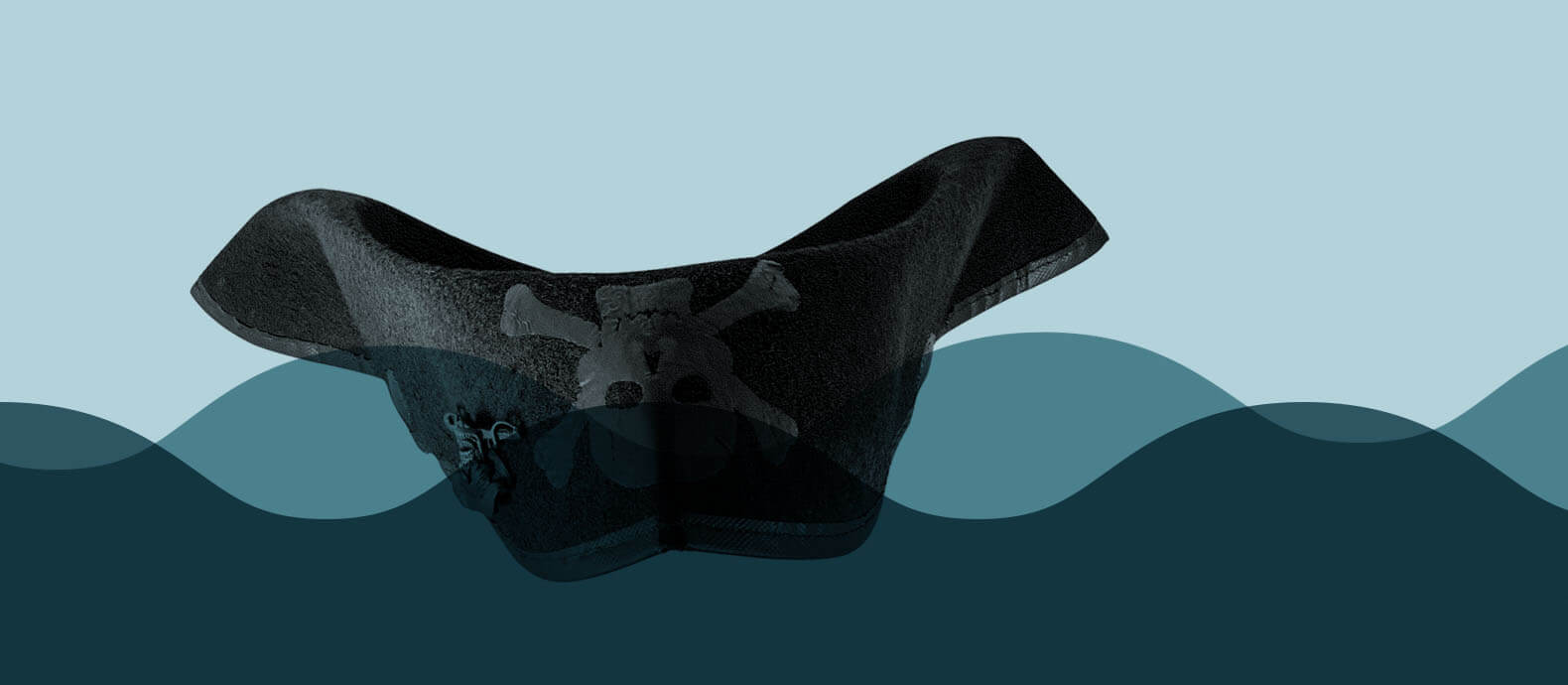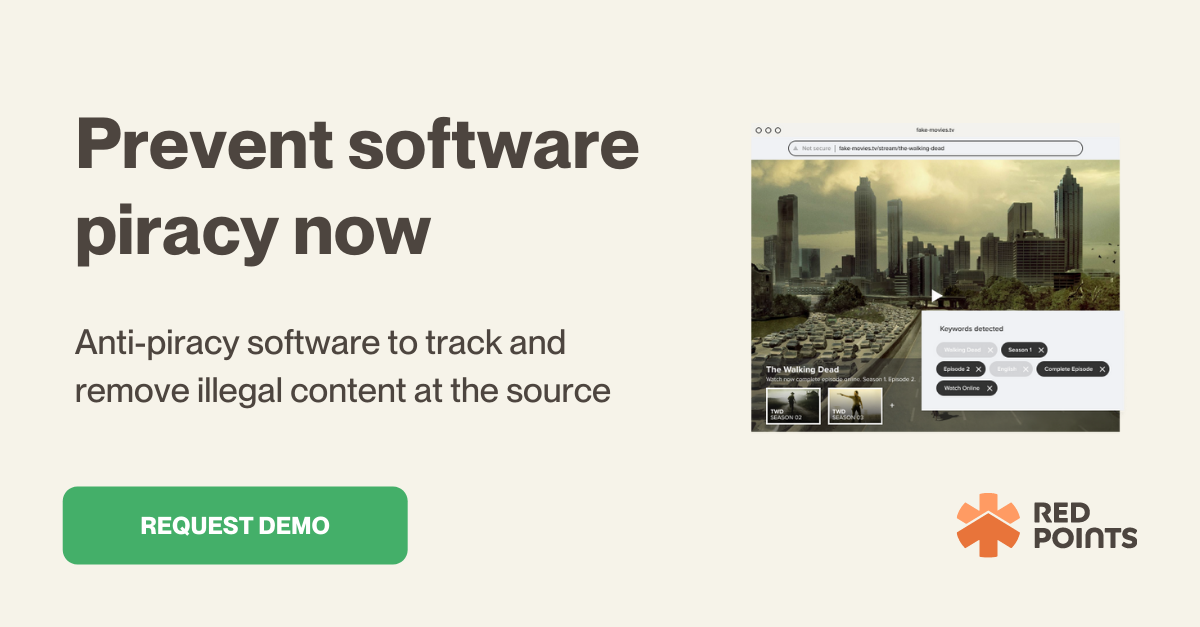
Table of Contents:
Last updated on: December 23, 2022
It’s true that pirates aren’t just a myth or a reality. They can be found online as well, intent on stealing and redistributing others’ work for their own gain. If you’re fighting digital piracy, you’ve got a lot to deal with.
With the advancement of technology, software piracy has gotten both easier and more common at the same time. Despite the fact that the majority of the population is aware of piracy, many are unaware of the seriousness of the problem.
In this article, we will take an in-depth look at what is anti-piracy and the measures businesses and governments can take to stop piracy.
Internet-related unlawful activities like as file sharing, downloading, and counterfeiting are collectively referred to as “piracy”. Internet piracy is risky, and in most cases, illegal, despite not having the allure of traditional swashbuckling.
Anti-Piracy is a service that can monitor and take down unlawful online distribution such as web, social media, and P2P sites for content that has been registered by the customers of that anti-piracy software. Anti-Piracy can also alert consumers when it finds illegal online distribution.
Here are the three main types of piracy:
This sort of piracy involves the unauthorized replication, distribution, and/or sale of copyrighted content with the goal of replicating the original. Counterfeit CDs containing software applications, as well as packaging, manuals, licensing agreements, labels, registration cards, and other security elements, are all too frequent when it comes to packaged software.
There are still ethical questions surrounding file sharing, despite it being one of the oldest forms of online piracy. Music, video, and other tiny files may now be shared between computers using file-sharing systems developed in the 1990s. Unfortunately, there were a number of issues that arose as a result of this cooperative approach. Copyright infringement is a common problem with file sharing since it allows for easy malware infection that might lead to the devastation of other machines.
This happens when you download software from the internet. Online software purchases are subject to the same regulations as CD-ROM purchases. There are a number of common methods of Internet piracy:
It’s not uncommon for workplaces and corporations to engage in piracy unknowingly. End-user piracy refers to the practice of illegally distributing software that is supposed to be installed on a single machine.
End-user piracy is still unlawful in the early 21st century and both corporations and their workers might face legal repercussions if they engage in it.
When an individual makes multiple copies of a piece of software without permission, this is called end-user piracy. Among them are:
There is a problem with online piracy in every industry that offers original content, including the film, television, and music industries. Sites that allow users to obtain pirated movies, music, books, and other unique forms of content are many. In the event that a company has intellectual property and sells unique products, it is likely it could eventually be stolen and replicated online somewhere.
There has been a rise in the number of visitors to software pirate sites throughout the world from the beginning of 2020 to the third quarter of 2021, reaching 3.2 billion in the most recent quarter. In terms of the number of visits, China and Russia are the two most popular nations.
In 2020, piracy increased as a result of the epidemic. Online piracy has continued to grow and now, in 2022, piracy has become a major concern for a wide range of businesses, predominantly streaming platforms that are all fighting for customers in a hyper-competitive industry.
Piracy in the publishing industry accounts for the second-largest portion of piracy. Piracy sites were accessed 30 billion times by people searching for books, with the United States, once again, the most popular country. At 14.5 billion visits, movies were the third most popular type of content.
Digital piracy is sometimes touted as a way to boost viral marketing, but a number of studies have revealed that the risks significantly exceed the benefits. There is a huge social cost associated with online piracy in addition to the obvious financial one.
There must be an end to digital piracy in order to protect the whole industry, including its individual producers and corporate personnel.

Brand piracy has a significant economic impact and with the advent of digital media, its influence has grown exponentially.
A group of people wanting to host a well-known movie on their server may effortlessly download and share it for free. Tens of thousands of people can watch the movie instantly once it has been downloaded.
It’s common for consumers to mistakenly feel that digital pirates are really benefiting them. As a result, the exact thing that is meant to aid them in their search for greater amusement is instead harming them the most. Customers aren’t receiving the quality that the original artists and companies intended if customers solely use stolen material.
When original material is stolen and shared online, every sector that produces unique content suffers. Every day, new methods of internet piracy emerge, no matter how hard organizations try to combat them.
Petty theft of intellectual property can have a negative influence on the international relations of local cultural sectors. It hurts legitimate enterprises, who are unable to compete with pirates’ low costs. As a result, piracy has a negative impact on economic growth.
Pirated items have a negative influence on the legal sector’s production, resulting in a fall in the number of jobs produced.
Both appropriate copyright protection and the efficient enforcement of such protections are prerequisites for attracting investment. A country’s capacity to attract investment and reap the additional benefits of increasing employment, wealth development, and tax revenues would be lost if either of these aspects were lacking.
Because pirated content is always being compared to the original, customers are often left with a terrible experience. Creators of online content are constantly engaged in conflicts about how to maintain the integrity of their brands or the industry as a whole because of the impact of pirates.
Since 1790, U.S. laws have provided copyright protection for works of art, such as plays, photos, sheet music, or even recordings of music. Copyright-protected intellectual property was first made a felony in 1909 when it was used without the owner’s consent or payment.
However, the public’s “fair use” of copyrighted works is recognized under US law. This is an area of law that has largely been established by court rulings, however, it remains vague and contentious. Copyrighted works may be freely copied and used for criticism, news reporting, scholarly research, or education under the terms of fair use.
U.S. supreme court enlarged “fair use” in 1984 to cover home videotapes of TV shows used for personal use, but not for distribution or public display.
In the 1990s, new technology made it possible for anyone to generate high-quality digital copies of protected music on a computer and distribute them freely via the Internet. As a result, the era of digital piracy was born.
A famous example of piracy occurred in 2020, it was the prosecution of Sparks Group. Three individuals faced federal charges for their roles in an international pirating ring that disseminated blockbuster movies and television episodes online ahead of their release dates that year.
The alleged members of the Sparks Group, a multi-continental piracy syndicate, were charged with copyright infringement conspiracy.
“The group allegedly circumvented copyright protections on nearly every movie released by major production studios, as well as television shows, and distributed them by way of a worldwide network of servers,” Audrey Strauss, the acting United States attorney for the Southern District of New York, said in a statement.
Members of Sparks Group, according to the police, got DVDs and Blu-ray discs fraudulently from wholesale distributors in New York and New Jersey, often misrepresenting the reason for getting the discs before the retail release date.
The individuals were also accused of employing software to overcome copyright protection in order to distribute movies or television episodes over the Internet.
The following is a list of some of the most popular anti-piracy tactics in use today.
1. Continuously pursue the internet pirates as well as the file-sharing networks they use. The current approach of huge media firms is to sue end-users of peer-to-peer file-sharing networks. Only a small percentage of those who illegally download copyrighted music and other pirated materials are actually brought to justice. However, the public’s reaction may cause others to pause before downloading “free” music or movies in the hopes that they won’t have to pay hundreds of dollars afterward. Because KaZaA and other similar file-sharing networks are generally based in other countries, defeating them is a difficult task.
2. Use technology to prevent unauthorized access, copying, and distribution of digital media. Various sorts of encryption, copy-protection locks, and other technical solutions have been used by media firms to secure their products. These technological improvements do their job, but digital thieves always manage to find a way past them.
You can actually increase the lifetime value of your copyright by continuously tracking and removing unauthorized content. Unfortunately, doing this task manually can quickly become time-consuming, labor-intensive, and expensive, which ultimately means most brands are particularly vulnerable to these digital pirates. Fortunately for brand owners, however, Red Points’ Anti-Piracy Software can automate the detection and removal of copyright infringements.
3. Promote ethical and lawful usage of copyrighted digital material among the general public with a focus on the next generation. Packaging for music records, movies, software, and video games now includes a new FBI anti-piracy notice regarding unlawful copying. Some argue that kids should be taught about the importance of copyright laws and the ramifications of breaking them as there is a strong correlation between a young person’s likelihood of becoming a digital pirate depending on their environment. Factors such as the views of their classmates, siblings, parents, or teachers all play a big role in eliminating piracy.
5. File-sharing technologies can make it easier and more affordable for customers to acquire the things they want. There has been a reluctance among the digital media sectors to stray from their tried and proven marketing strategies. However, while online music platforms, like Apple’s iTunes Store or Spotify, are increasingly offering lower-priced music downloads straight to users, the film industry, on the other hand, has been reluctant to take this step because of concerns about internet security.
6. In addition to the standard take-down warnings, operators can employ a range of countermeasures, such as built-in Digital Rights Management (DRM) or watermarks, to stop and remove stolen content in real time. With the establishment of law enforcement, harsher countermeasures may be taken against these criminals.
The most important factor is speed. While legal action will take considerably longer after the fact, the best method to prevent pirates and direct customers toward legal options is to remove the content from the internet as quickly as possible.
In the coming years, content producers will have to strike a compromise between digital piracy and DRM.
P2P platforms, applications, and other P2P-based services are used by software pirates to distribute pirated material. More places are searched by Red Points’ bot-powered search to find the root of the problem. Automated de-indexing and removal requests can then be sent depending on your rules. There is no limit to what our professionals can do.
See how you can eliminate unauthorized use or reproduction of your content with Red Points’ Anti-Piracy Software.
